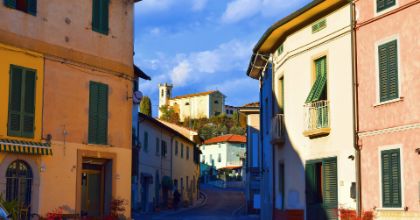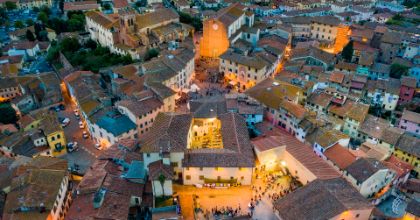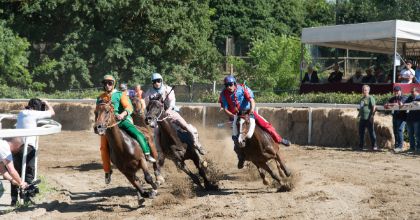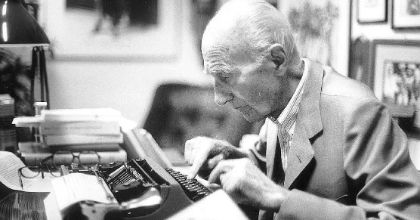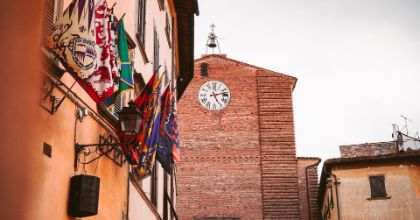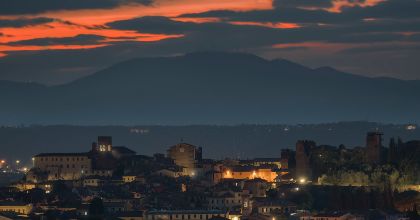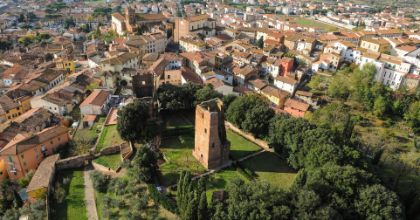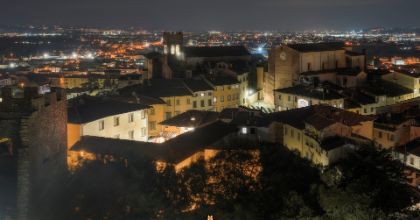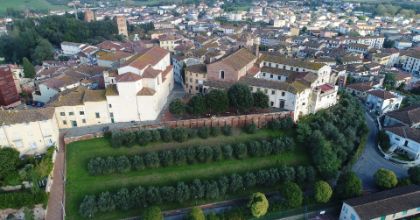The origins of the name Fucecchio
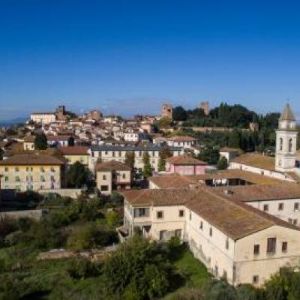
To explain the name Fucecchio historians and scholars of the past, have practiced with the most daring interpretations.
Ficeclum is without a doubt the oldest and most widespread word, which, after a very dubious testimony of 932, has been affirmed with certainty since 1011 and then repeated, in the same form, in many papers related to donations in favor of the abbey of San Salvatore during the eleventh century. Afterwards Ficeclum evolved into the form of Ficecchium (13th century), then Fucecchium (14th century), and finally into the Italian vulgar Fucecchio (sometimes, as has been said, also Focecchio, but rarely).
On the basis of these testimonies the experts of linguistics interpret the name Ficeclum as a derivation from ficetulum, that is "place of figs", leaving to imagine that the prevailing or more showy vegetation was formed around the Thousand by figs.
Is available an in-depth analysis on the origins of the name Fucecchio by Professor Alberto Malvolti.
The cadolinge origins
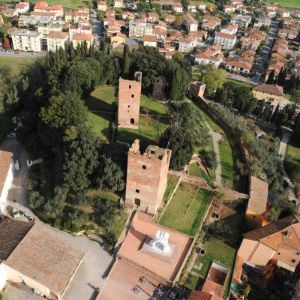
The origins of Fucecchio are closely linked to the history of the Cadolingi counts, a powerful family of Lombard origin that, around the year 1000, already owned lands and castles in the Valdinievole and the Lower Valdarno. Driven by the growing power of the Bishop of Pistoia to seek new spaces to assert their own autonomous power, they found in the 'place called Fucecchio', the ideal conditions to build the center of a territorial lordship equidistant from the major cities (Pistoia, Lucca, Pisa and Florence) and at the intersection of important roads of land (the Via Francigena) and water (the Arno and the Gusciana, emissary of the Padule di Fucecchio). At a ford on the Arno they built, around the year 1000, the castle of Salamarzana, the first nucleus of the settlement of Fucecchi.
In 986 is documented for the first time the Church of San Salvatore, founded by Count Cadolo near the bridge over the Arno and the adjacent port. On the river was born the second settlement from which would develop the town of Fucecchio: Borgonuovo, a village grown next to the Arno and enlivened by the continuous passage of merchants and pilgrims.
Shortly before the year 1000 Count Lothair, son of Cadolo, next to the Church of San Salvatore a Benedictine monastery. The new institution, benefiting from numerous donations, became one of the most prestigious in the region and managed to accumulate a vast land heritage. In the early twelfth century a ruinous overflowing of the Arno forced the monks to rebuild the buildings in a safer place, on the hill near the castle of Salamarzana (now Poggio Salamartano). Since then, and until today, albeit through changes and renovations, the abbey and the adjacent church of San Giovanni constituted the main ecclesiastical center of the country.
The expansion of the 1200
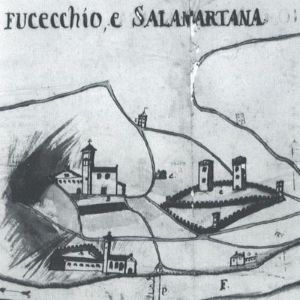
Extinct in 1113 the Cadolingi dynasty, the castle went through a period of decline, being at the center of conflicts between the cities - Florence, Lucca and Pisa - that tried to occupy the space left free. It is in this period that matured a ruling class represented essentially by families become powerful in the shadow of the Cadolingi counts and that soon went to form the consular class of the City, formed at the end of the twelfth century.
During the thirteenth century, years of intense growth followed. The monastery, now in crisis, alienated the accumulated lands on which new houses were built. After the middle of the century, when the population growth became more and more intense, the new villages expanded to fan over the "old castle" going down in the direction of the Arno according to five axes that were headed to the oldest castle gate (the current Piazza Vittorio Veneto). Starting from the east they were: the contrada of Porta Raimonda (Via P. Martini), Borghetto (Via La Marmora), the village of Gattavaia, the contrada of dominus Bernardo (Via Donateschi) and the contrada of Sambuca, the area between the current Piazza Cavour and Poggio Alberighi.
Such was the impulse of the growth that before the end of the thirteenth century had to proceed to the construction of a new city wall with which the new villages closed at noon. Thus, at the beginning of the fourteenth century, the urban footprint of the castle of Fucecchio was definitely consolidated.
The plague and the renaissance of 1500
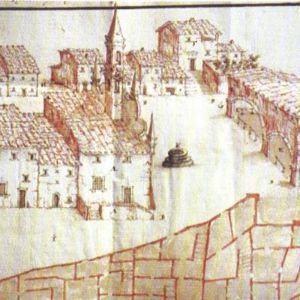
In 1314 the town of Fucecchio was detached from the ancient dominant city, Lucca, to gradually approach Florence, which was subdued in 1330. In those years the castle had reached its maximum expansion approaching the 3000 inhabitants, but population growth was soon curbed by a serious plague that, around the middle of the fourteenth century, raged all over Europe: the population was decimated, The villages of Cerbaie were depopulated, the countryside was abandoned. In the early fifteenth century the town of Fucecchio had only a thousand inhabitants.
The recovery was slow and coincided with the gradual repopulation of the countryside since 1500. The low cost sale of communal land and the increasing presence of farms and estates of the rich Florentine owners, including the Medici, soon gave a new impetus to crops. This rebirth and expansion attracted many arms giving rise, during the seventeenth century, to a new population growth: in fact, new churches were built and enlarged the ecclesiastical buildings, the civil building was renewed with the construction of the major local patrician palaces.
Fucecchio between '700 and '800
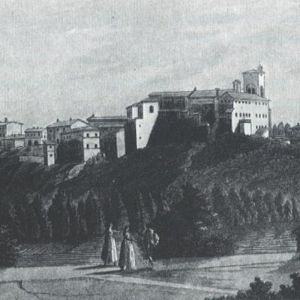
In the middle of the '700 population growth became even more rapid and impetuous while in the surrounding countryside matured important innovations. Thanks to the sale to private owners of the municipal heritage of Cerbaie and the farms that made up the grand ducal farm of Ponte a Cappiano, about a third of the municipal territory came out of a centuries-old immobilism entering into circulation and going to found, or enlarge, the family patrimonies. Also the drying up of the "Lake" of Fucecchio, brought back after over three centuries to the original condition of swamp, contributed to the recovery of unused land.
During the '800 Fucecchio is again a populous country where the main activities are related to manufacturing, crafts and small trade but where there is still a real industrial impulse and above all a widespread poverty affects the most marginal population layer. The first industrial production unit was the Taddei match factory, which at the end of the century employed 600 men and women. It was only after the Second World War that Fucecchio encountered its true "industrial revolution" thanks to the development of the tanning and footwear sectors that multiplied employment by recalling a consistent immigration from the South of the country.
The Massacre of the Padule
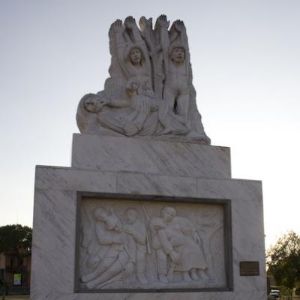
August 23, 1944 is an indelible date in the memory of all. A terrible day for the Padule di Fucecchio, the scene of a war action by a retreating army. The Germans cordoned off the marshes at night and opened fire at dawn.
A few months old children, young mothers, elderly people who are infirm, defenceless men are judged partisan and killed. There are 175 victims of Nazi-fascist ferocity. Few are saved, and by miracle. But there are those who, faced with the tortured bodies of their families, lose their reason.
Oaks and Massarella, hamlets of the town of Fucecchio, mourn eight dead. The massacre also involved Ponte Buggianese, Castelmartini (Larciano), Cintolese (Monsummano), Stabbia (Cerreto Guidi). Among the dead, local people but also people from outside, displaced, arrived there in search of safety. A long and heartbreaking list.
In the late afternoon, the Germans - in the controls - celebrate the feat, singing, dancing and shouting the false 'Partisan kaput'.
The liberation
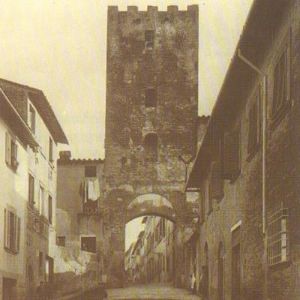
Fucecchio was liberated on 1 September 1944 by the 6th South African Armoured Division and the 1st American Armoured Division.
The announcement of the liberation was given by an American plane landed, with two men on board, in the area of the Fucecchio's Padule on the northen part of Via di Burello.
On September 2, the capital presented a bleak aspect: houses destroyed or severely damaged, piles of rubble on the streets, broken glass, wires of electrical pipes dangling, scrap piled on the streets and squares.
And it came, light, on the field, the plane, in that beginning of September. Small. Full of hope. End of the troubles. Just one lap and then landing under the eyes of people, exiting from the shelters dug into a hillside. Who had heard and seen and greeted him waving white towels. At first hesitant (but is he really American, of ours?), then exultantly. Down from the Niccolai hill and over the canals of the Padule, in Via di Burello, no bridges. All, the boys in the front row, without fear of mines. One thought: it’s over. Then around the two soldiers who smiled, shook hands, gave kisses and hugs, and spoke a broken Italian. But people understood. He understood that the Germans were gone, that they were on the run. And he enjoyed the first moments of freedom (Riccardo Cardellicchio)








